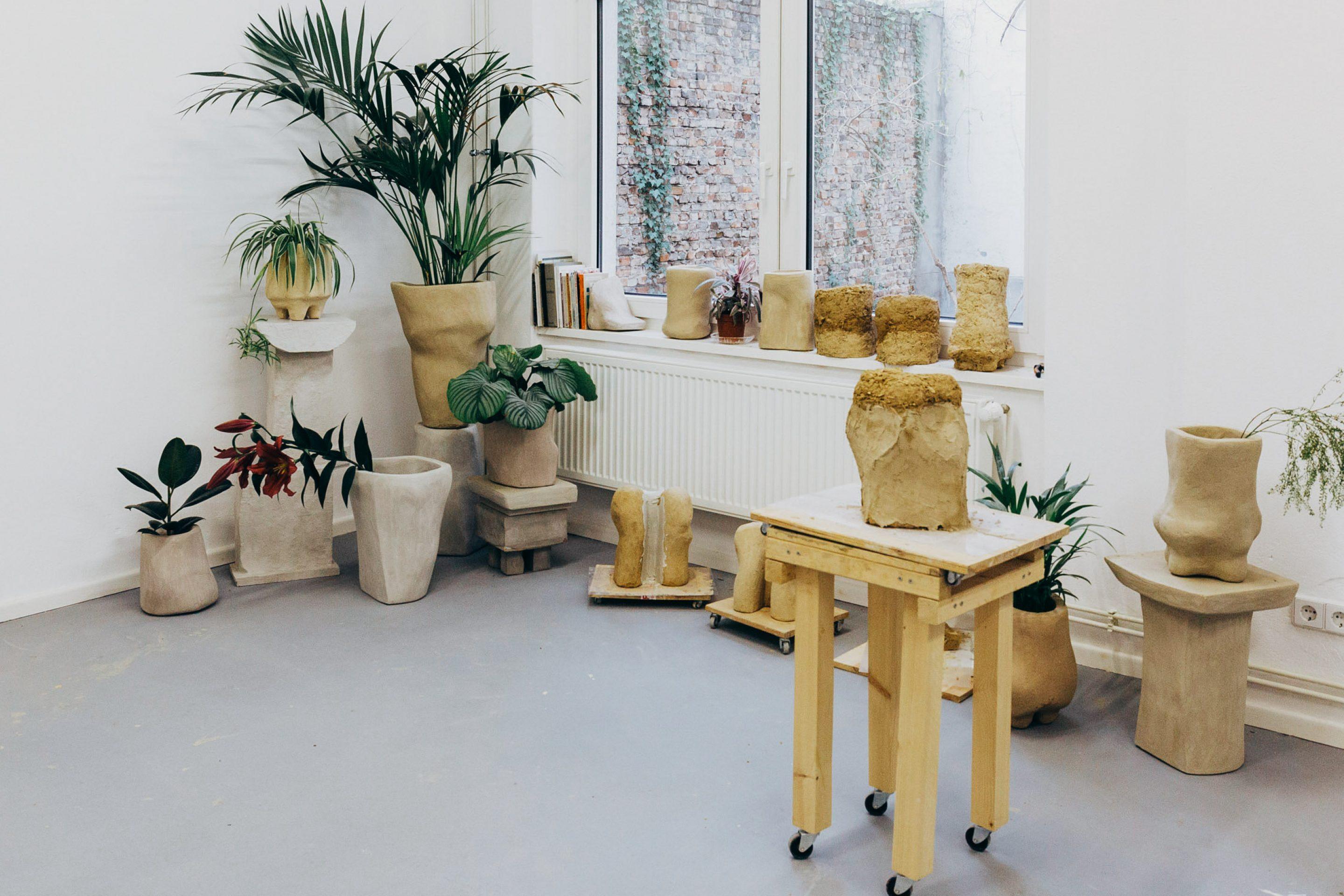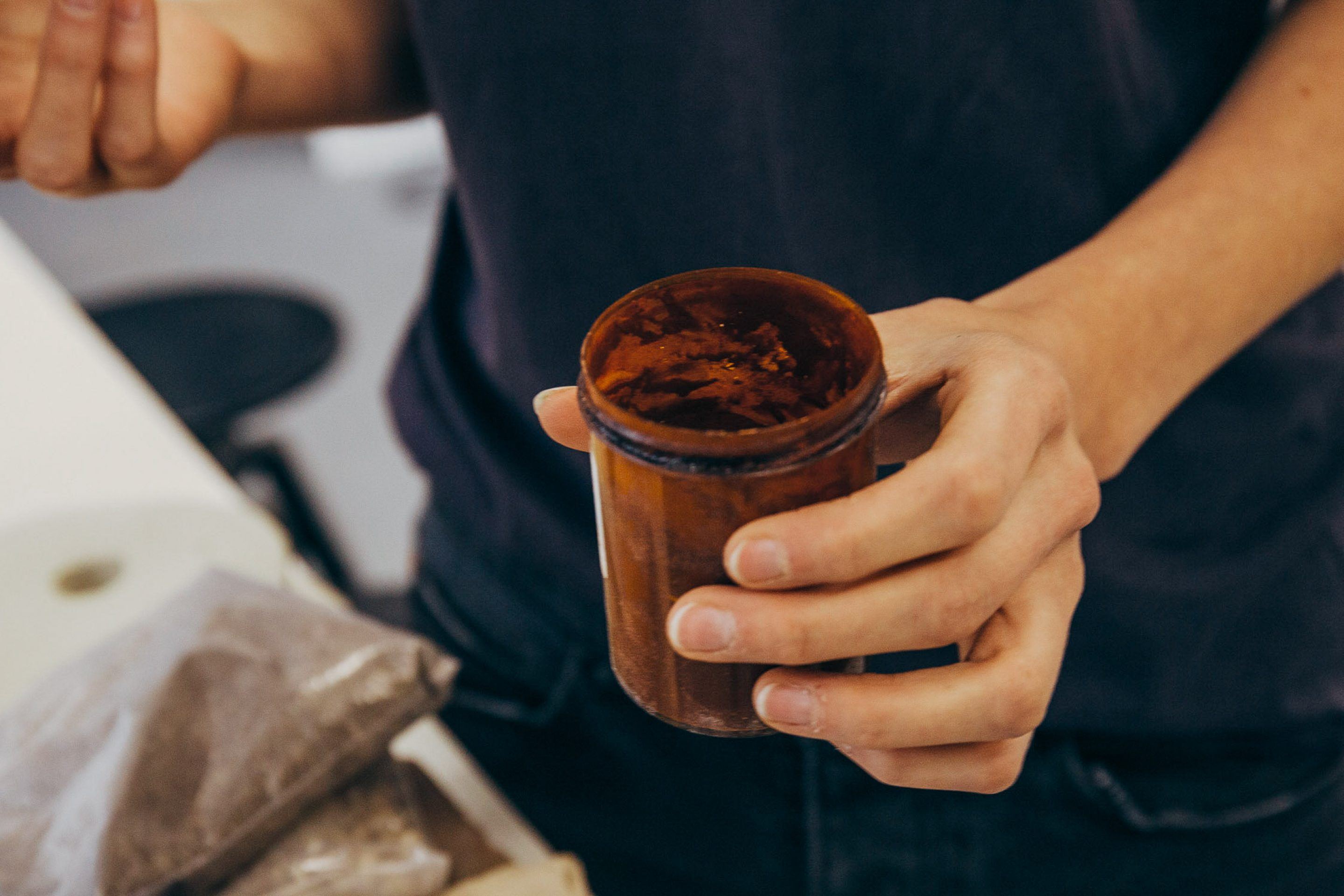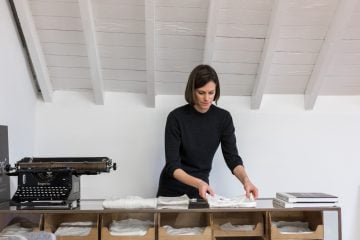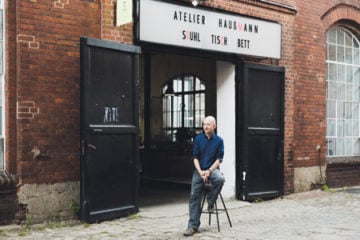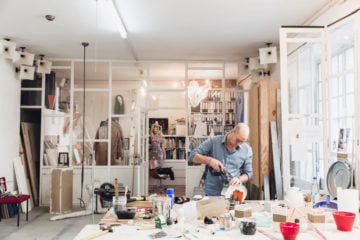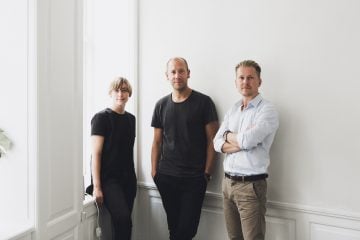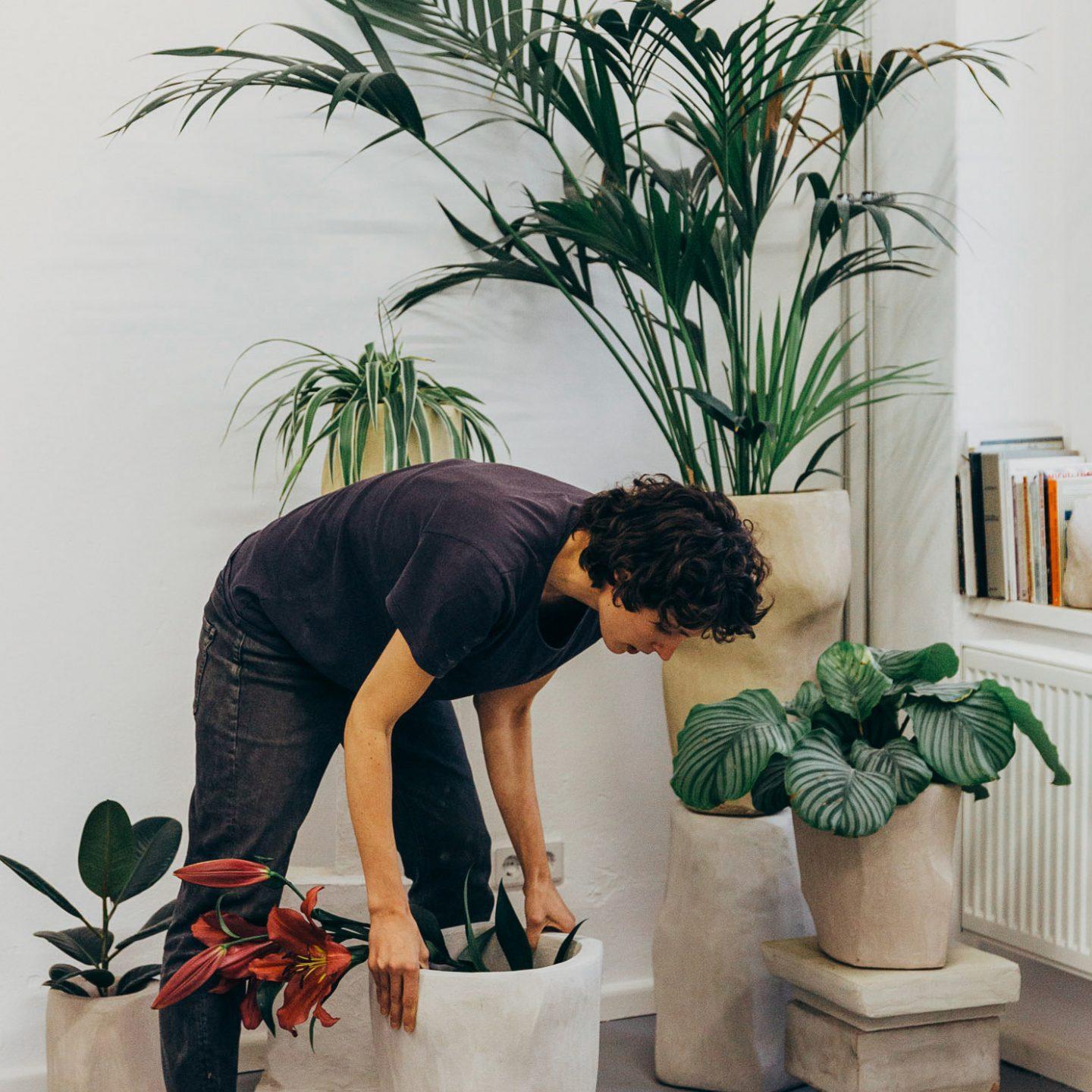
From High-End Fashion To Hemp: Yasmin Bawa Explains Why Material Matters
- Name
- Yasmin Bawa
- Images
- Silvia Conde
- Words
- Rosie Flanagan
With the UN warning that we have 12 years before the damage we have done to the earth is irreparable, global warming can no longer be ignored. Millions of lives are at risk if sustainable practices that limit our carbon emissions do not become the norm. Berlin-based artist Yasmin Bawa is leading the charge on an artisanal level, creating functional pieces for the home from a carbon sequestering material: hemp.
Hemp, for as long as it exists, acts as a carbon store. It is fast-growing, regenerates soil, and requires little water in comparison to other crops with a similar yield. You can build homes from it; it is breathable, vapor permeable, absorbs sound and is fire resistant. You can eat it, drink it, wear it, turn it into biodegradable plastic. Sadly, its status as a wonder-plant has been tarnished by its familial relationship to the psychoactive drug, cannabis. It remains little used outside of construction, with its multitudinous applications relatively unknown in popular consciousness.
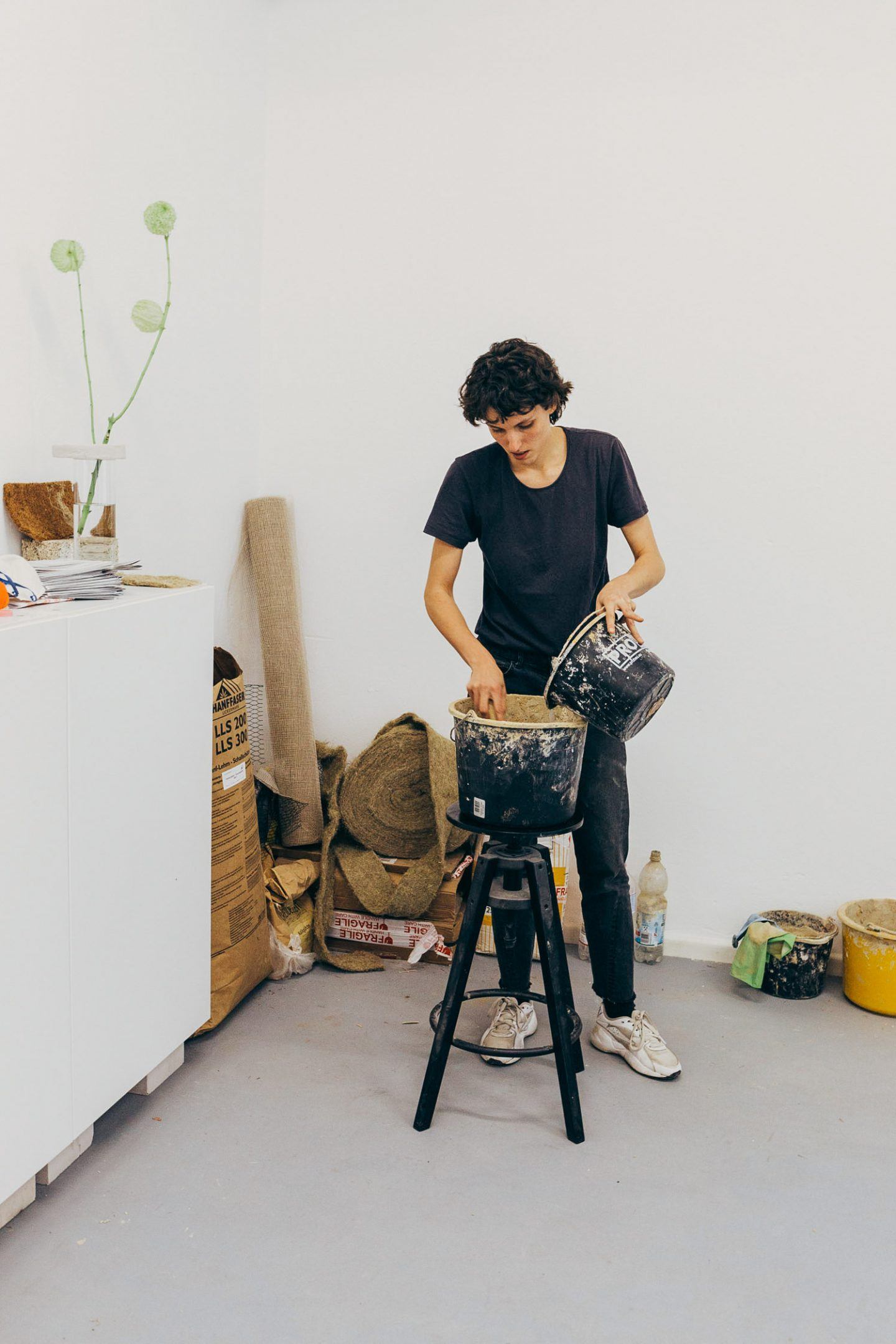
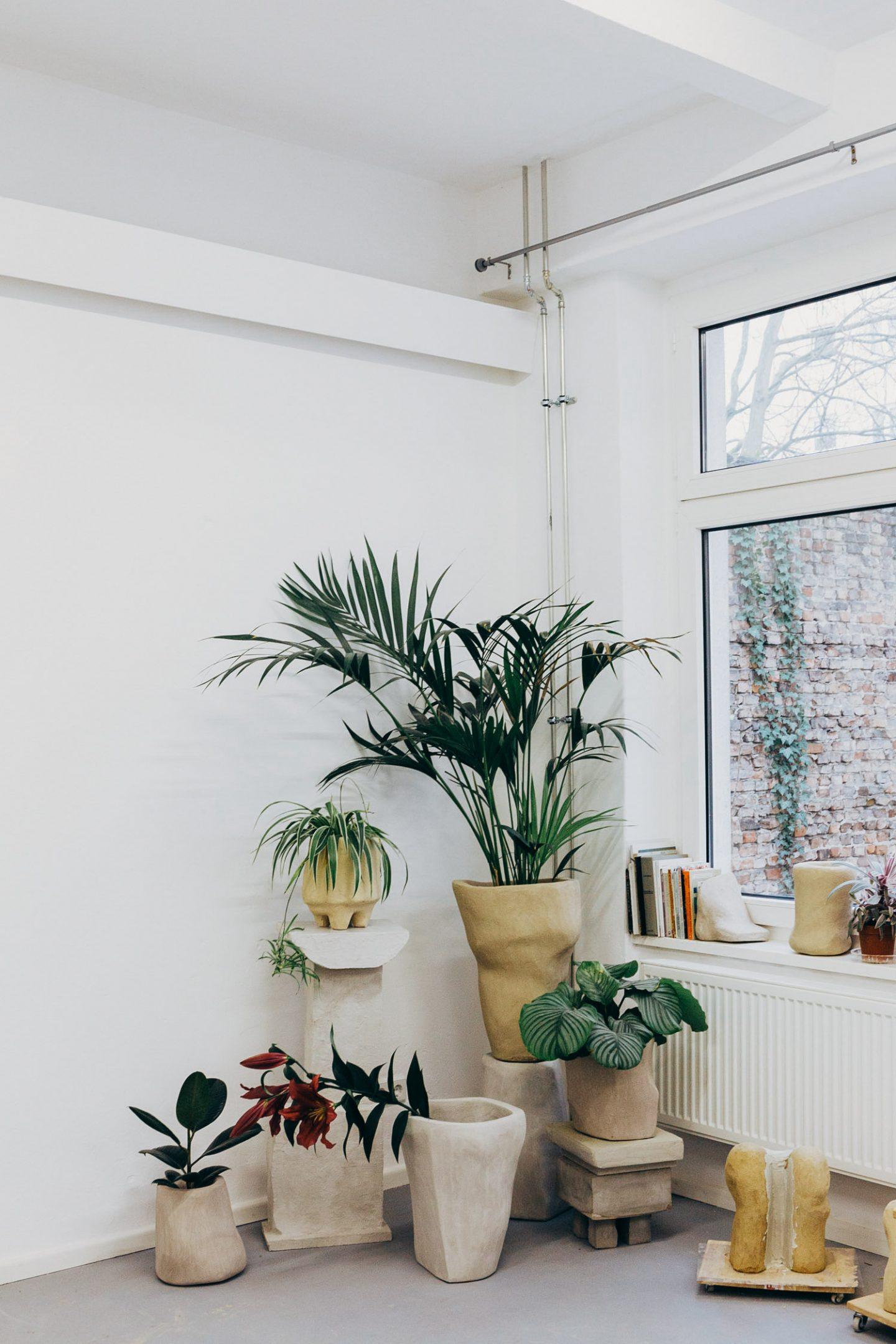
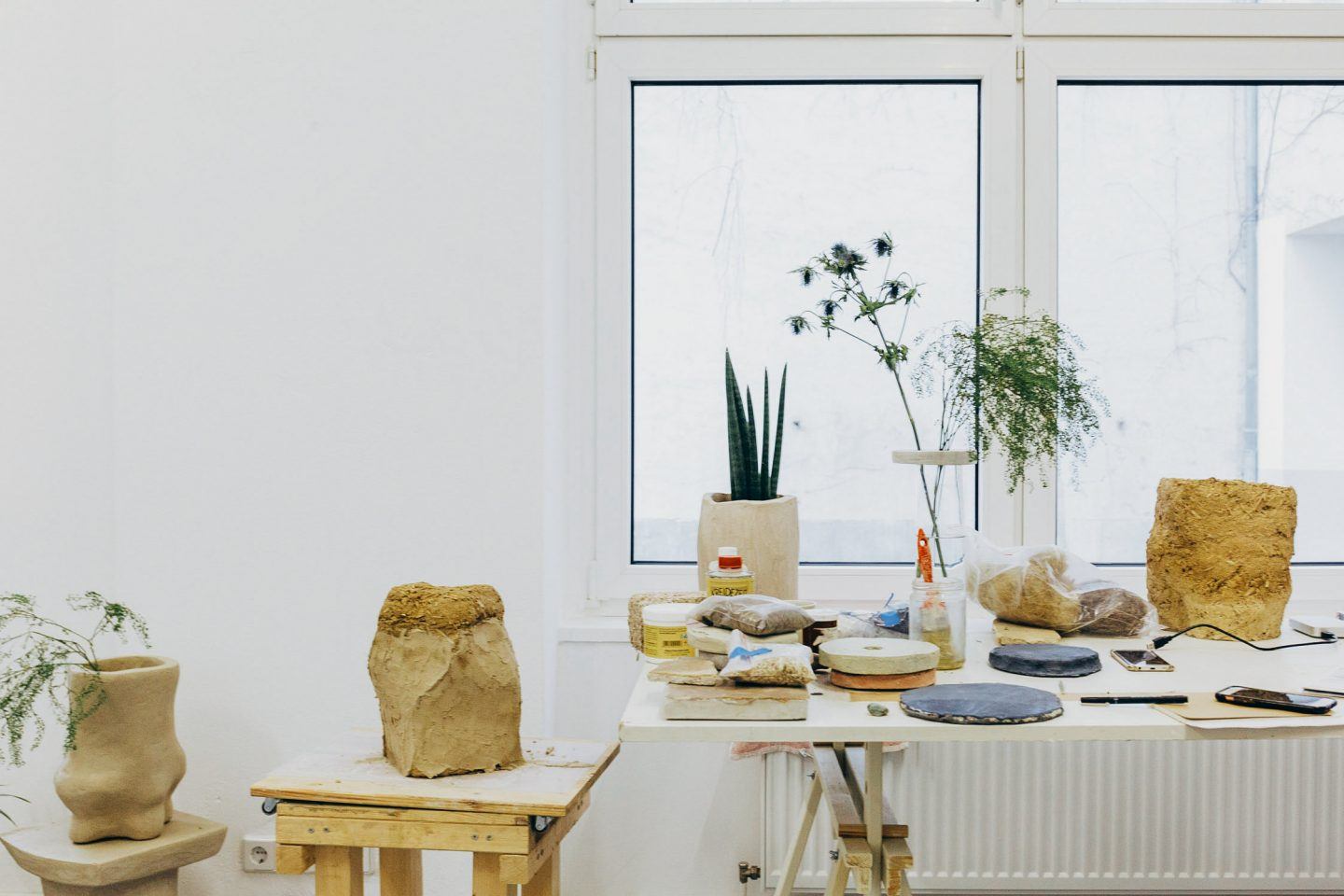
Yasmin laughs and shrugs when I suggest “Hemp Warrior” as a title for this interview; though said in jest, it isn’t too far from the truth. Most commonly associated with unfashionable eco-buildings, Yasmin is one of few artists exploring the design potential of hemp on a small scale. In addition to her work with the material, she also has curated a “best of” hemp playlist on YouTube and endearingly refers to the International Hemp Symposium as being “the best day” of her life. So, while she may object to the title of hemp warrior, she’s most definitely an advocate of the plant.
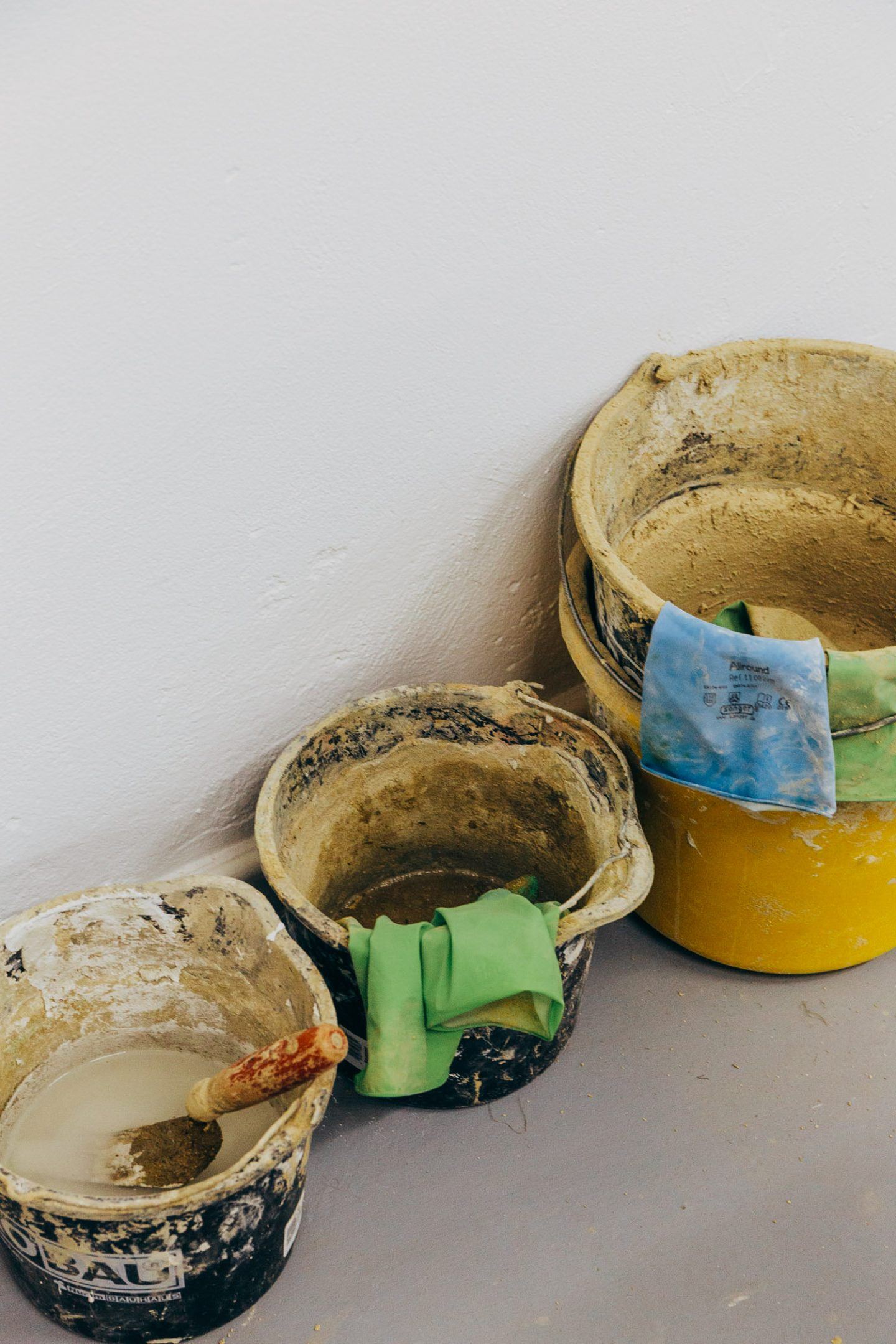
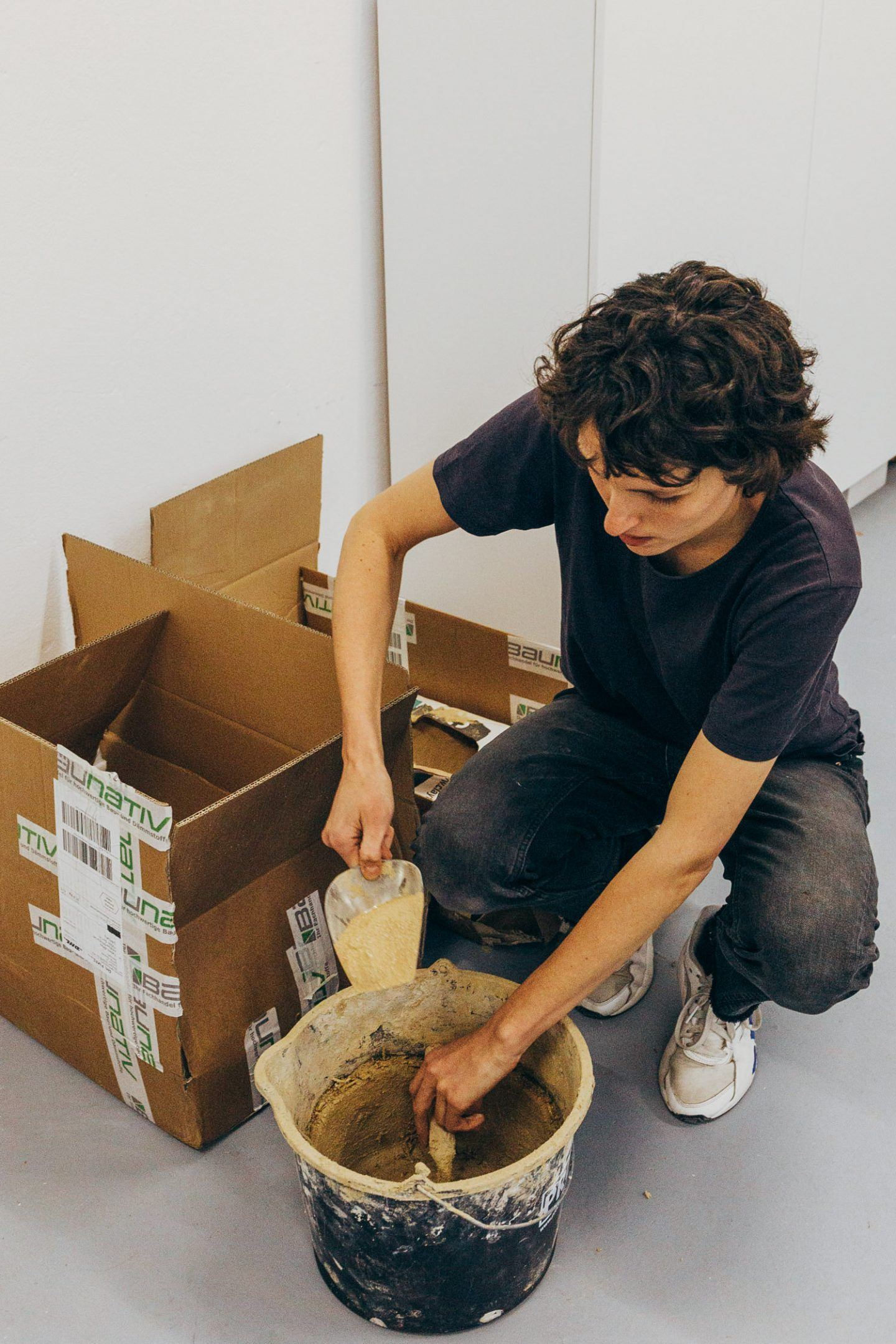
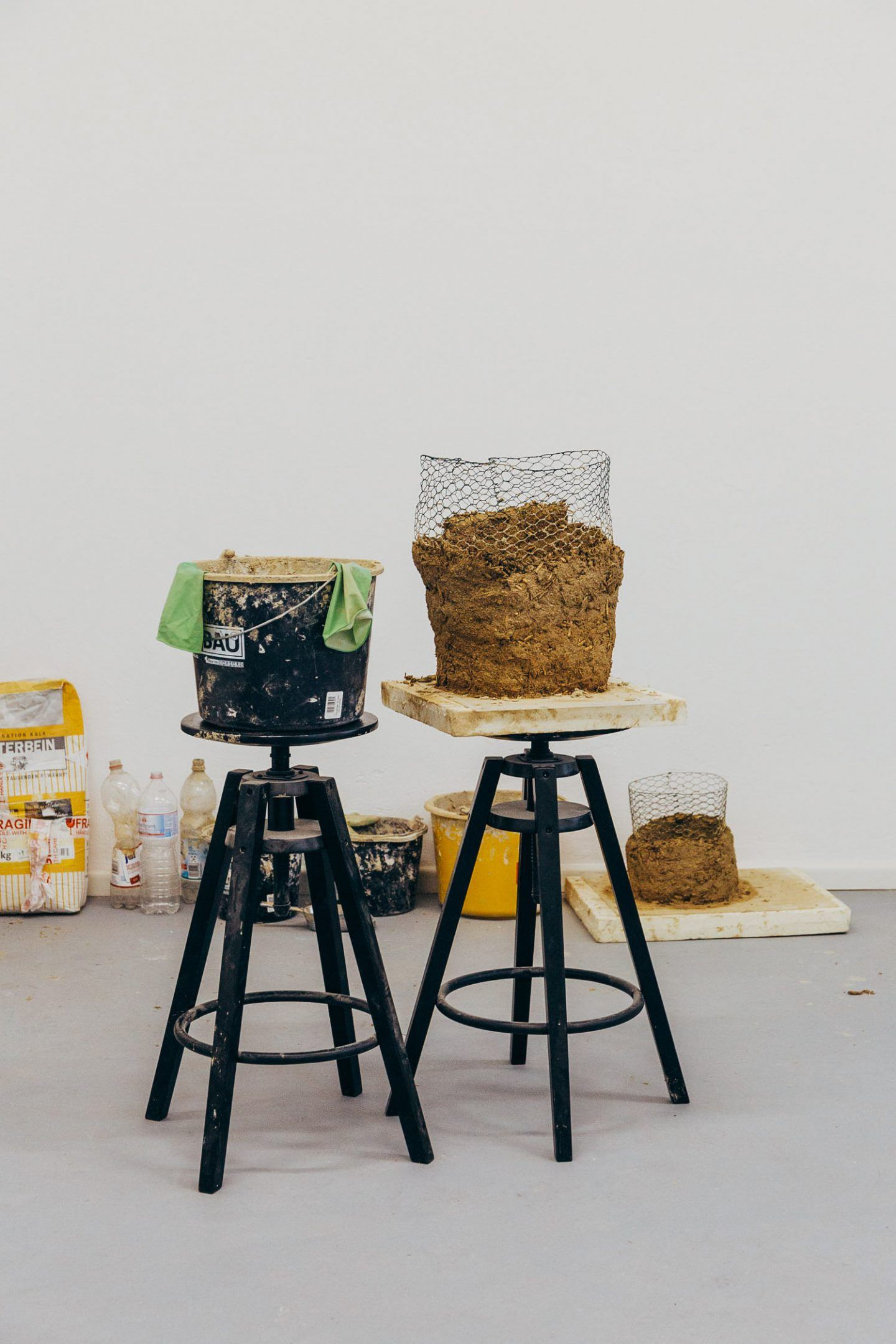
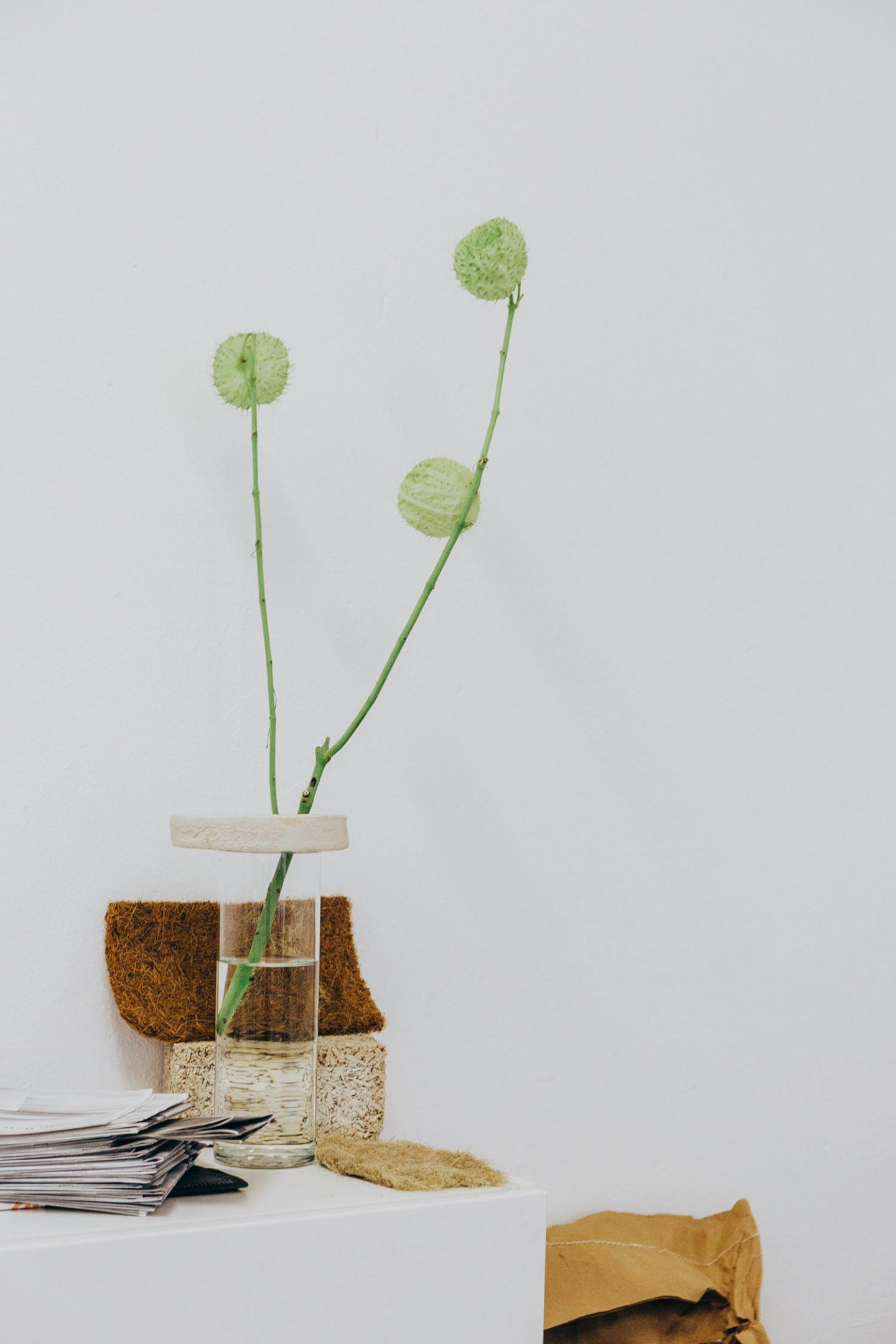
The studio of the American accented artist (who considers Berlin home, and Edinburgh her hometown) is situated opposite the bustling Markthalle Neun in Kreuzberg. Here, overlooking an internal courtyard thick with the remnants of autumn, she makes her work. It’s a quiet, bright studio that she shares with another artist. They only recently moved in, she explains, gesturing to the minimally decorated space. As she hands us matching cups of tea, we begin a meandering conversation that is guided by Yasmin’s story: From her career in high-end fashion design in Stockholm to a business going bust in Berlin, and finally, to hemp.
Yasmin’s career in fashion began at Acne Studios; a company whose explorative design she says had formative influence on her creative practice. Despite this fact, she is quick to mention that even during her time there she knew she wanted out of the industry. “I was already tired of the cycle”, Yasmin explains. “Before you’ve even finished designing one thing, you’re having meetings for the next show. It was nuts—I was always so happy with our concepts, we just never had the time to develop them.” The pace of the fashion industry is well known, as is the pressure for studios to match the production habits of fast-fashion labels like Zara, H&M, TopShop and Forever 21. Over the past 15 years, garment production has doubled, with between 80 to 100 billion pieces of clothing manufactured annually. The fashion industry now accounts for 10% of global carbon emissions and is second only to oil as the world’s largest industrial polluter. In no uncertain terms, the “fashion revolution” has had a devastating effect on the earth.
It is interesting to imagine the softly spoken, environmentally conscious Yasmin as a part of this world. “When I was in fashion I was really struggling with the numbers”, she admits. “Like, when we’re talking about 25,000 pairs of shoes; and you have someone telling you that it’s not enough… I can’t even visualize what 25,000 pairs of shoes look like. Can you imagine the damage of an order like that? I really struggled with it.” Sadly, even labels committed to sustainable and environmental processes are part of an industry where such standards are the norm. “When you’re working in it, it feels like there’s nothing you can do”, Yasmin tells us, “so I left.”


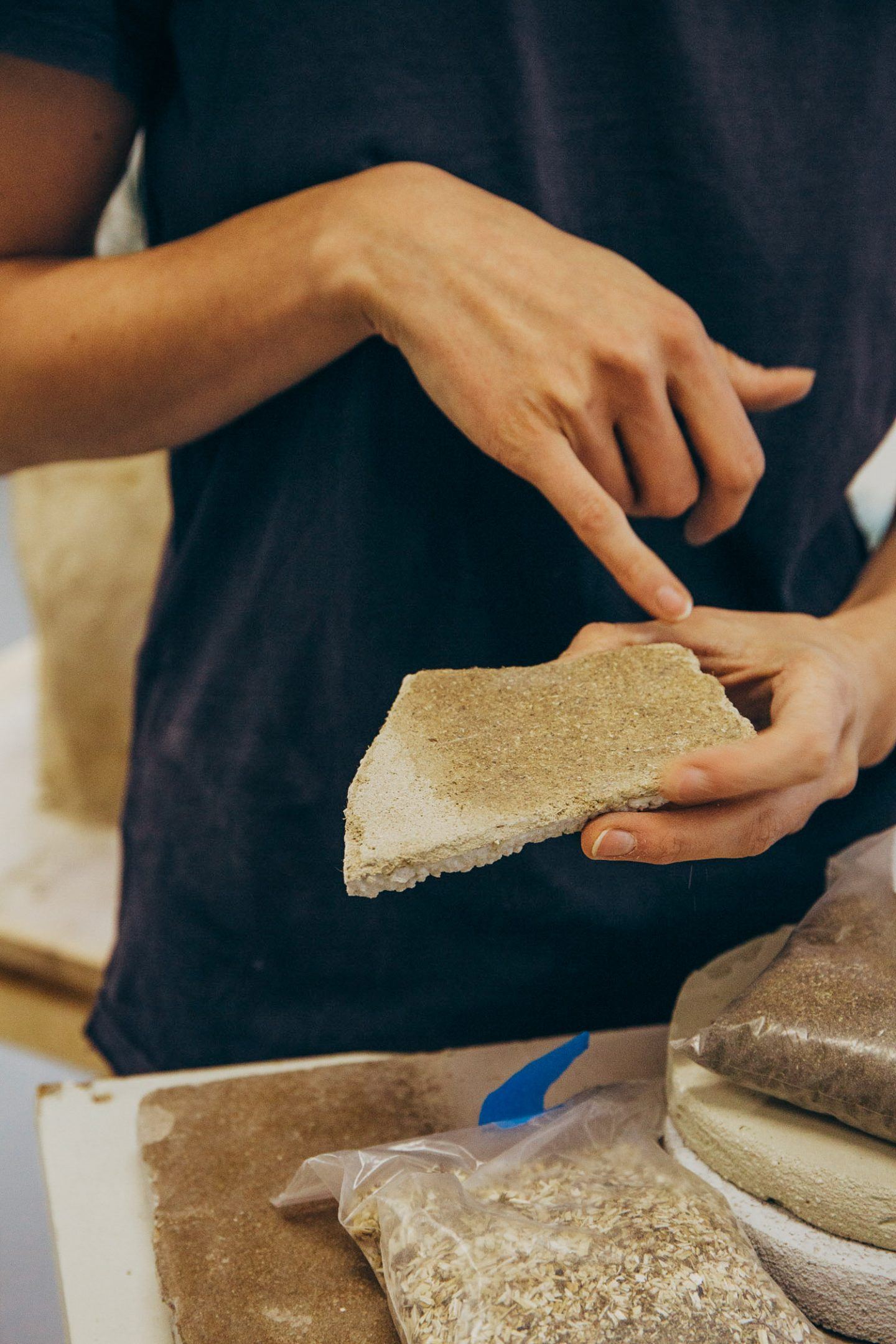
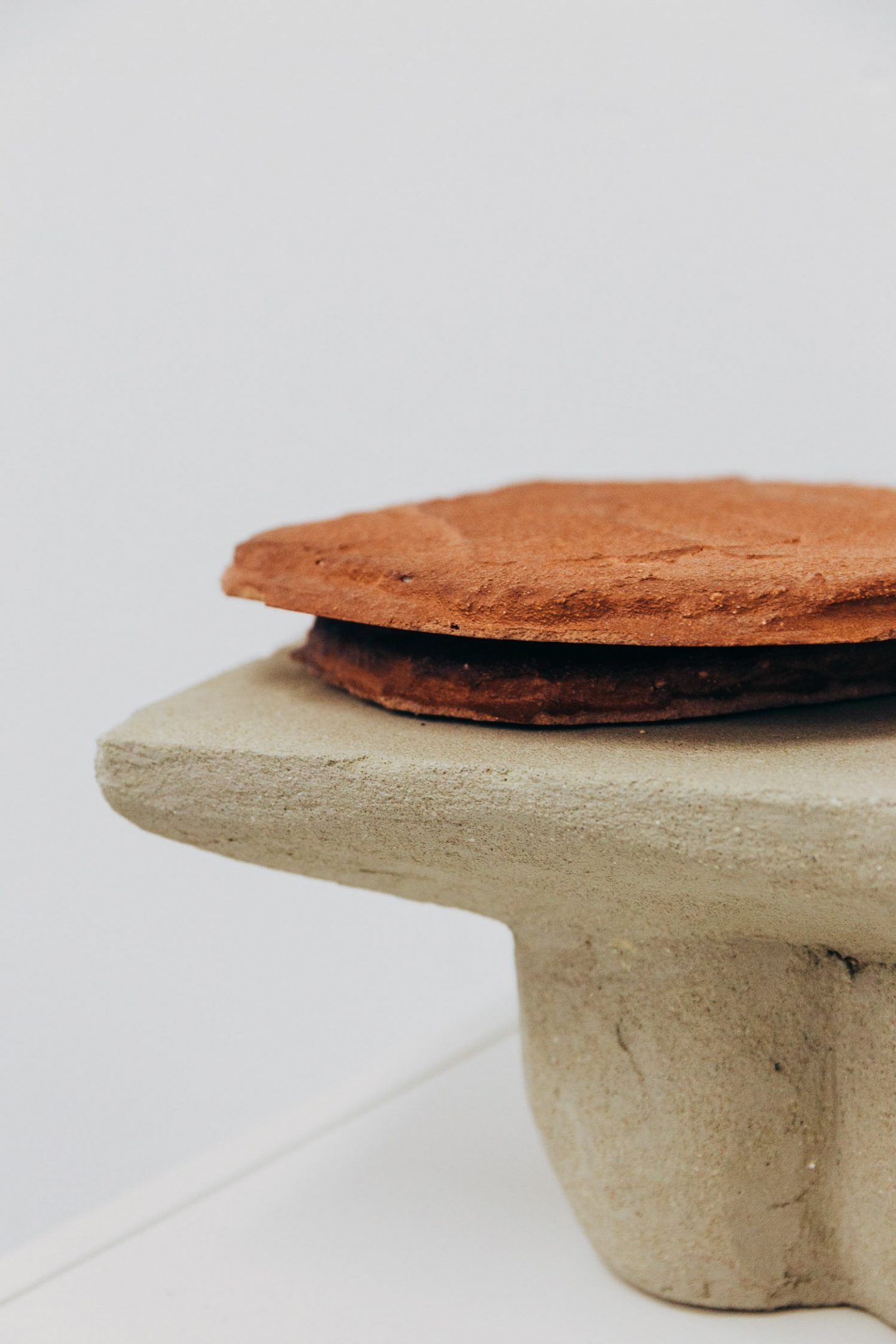
But leaving this job didn’t directly lead Yasmin to hemp, her route was far more circuitous. She moved from Stockholm to Berlin and began designing for another fashion label that would ultimately fold. “We had finished two collections and were ready to launch, and then they just decided to end it”, she tells us. “Within two weeks the whole studio was shut down. Everything we had was gone. They picked up everything in a truck and just took it away.” Ever the optimist, Yasmin explains that this abrupt ending proved fruitful, providing her with both the small business acumen and the creative push she needed.
“I knew I wouldn’t go back to working full-time for a company, and that I wanted to stay in Berlin”, she explains. “I think that in Berlin if you want to stay, you have to make it work. It’s not like there are a lot of jobs on offer.” Indeed, if you have ever trawled through pages of advertisements for jobs in this city online, you’ll find that Berlin—widely considered the arts hub of Europe—can seem strangely lacking in fulfilling creative careers. While it’s a city where dreams can come true, you certainly have to work to make them happen; doubly so if you’re from another country.
“If I was in London at that time, I probably would have just fallen back on a fashion job”, Yasmin notes. “But instead, I was forced to really try, there is a different kind of urgency here.” Channeling this sense of urgency, she put her three-dimensional design skills to work and began making her first pieces on the floor of her bedroom. With no formal training in sculpture, Yasmin’s practice began by bending the rules: “I constantly had people saying, ‘You can’t do that, you can’t build that way’”, she tells us. But she did. By mixing concrete with lightweight stones, she created a pliable material that could be molded by hand—perfect for her sculptural pots and tables.
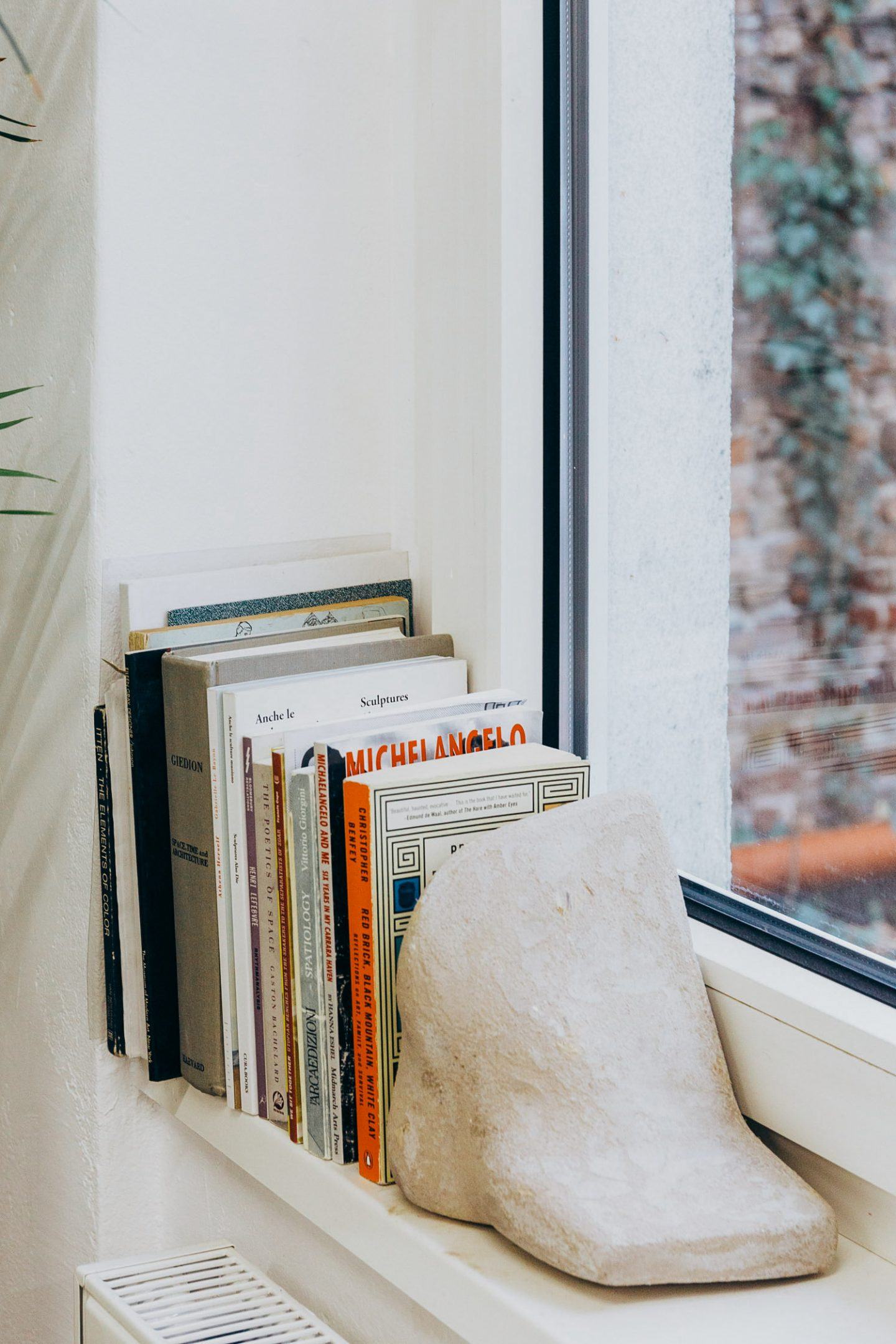
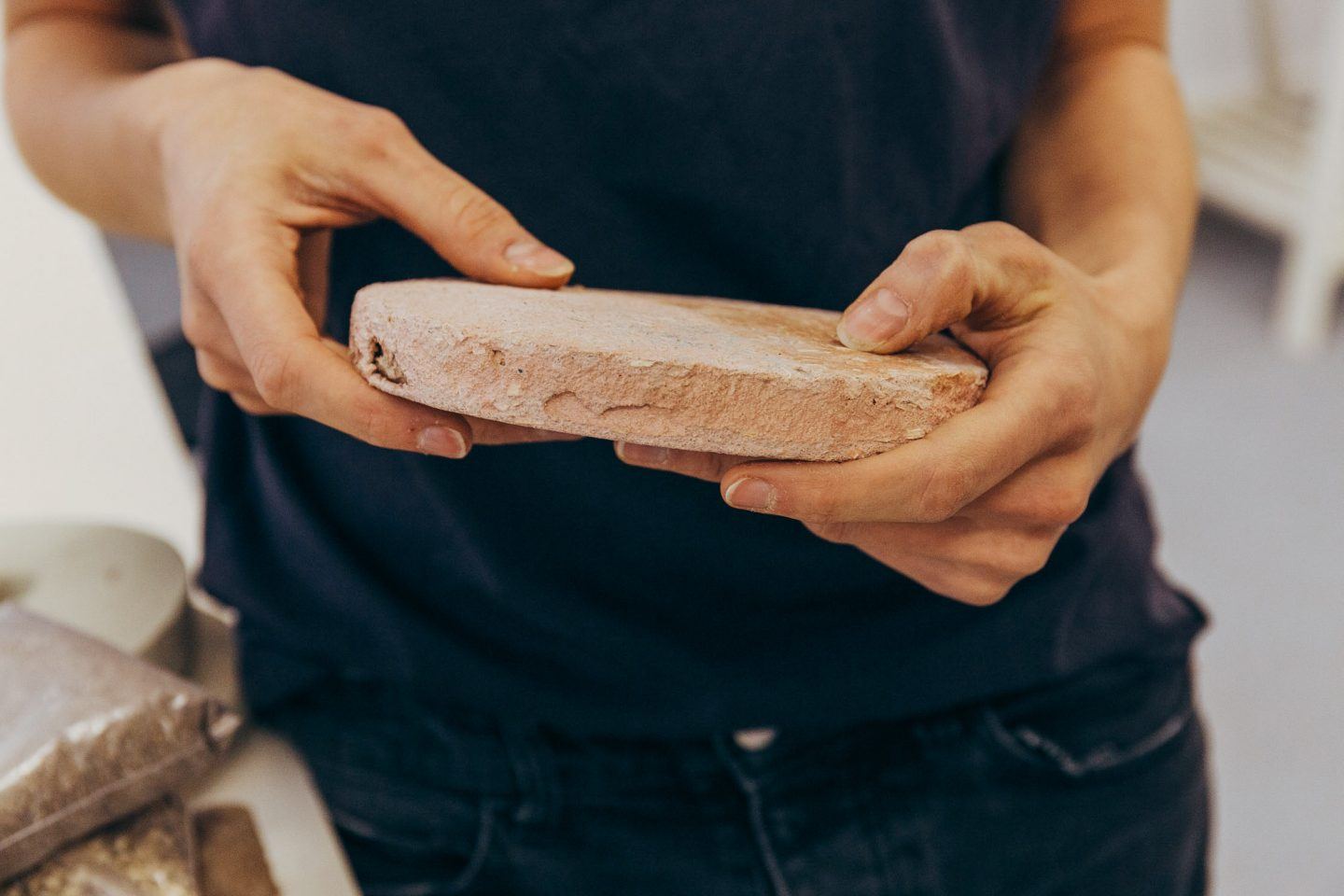
While interested in the material possibilities of concrete, its environmental impact weighed heavily upon her, so she determined to find a different product to work with. “It is really fascinating in a way that I didn’t expect when I first had the idea”, she explains whilst mixing hempcrete by hand. “It was more, ‘Oh, let’s go buy some hemp and see if it works’, I didn’t expect it to morph, and I really didn’t expect to be able to create something so similar to what I was able to make in concrete, that really surprised me.”
When asked how she came to the magic formula, she explains: “There were six months where I wasn’t really sure what I was doing, it was really trial and error”. She likens the method to the art of baking bread or mixing a cake; a simple process done by hand. Working with lime, water, and hemp shives—matter that more resembles rabbit food or shredded bark than a workable material—Yasmin creates her hempcrete. Its malleability is like that of clay, and its finish a smooth consistency redolent of concrete. Unlike clay, however, hempcrete pieces do not require firing in a kiln, air drying instead. “I don’t really use any electricity to create my work, I only use one hand tool to make everything”, she says, proffering a small spade towards us. “I did actually have a smaller one, but I stepped on it [laughs], so now I just have this.”
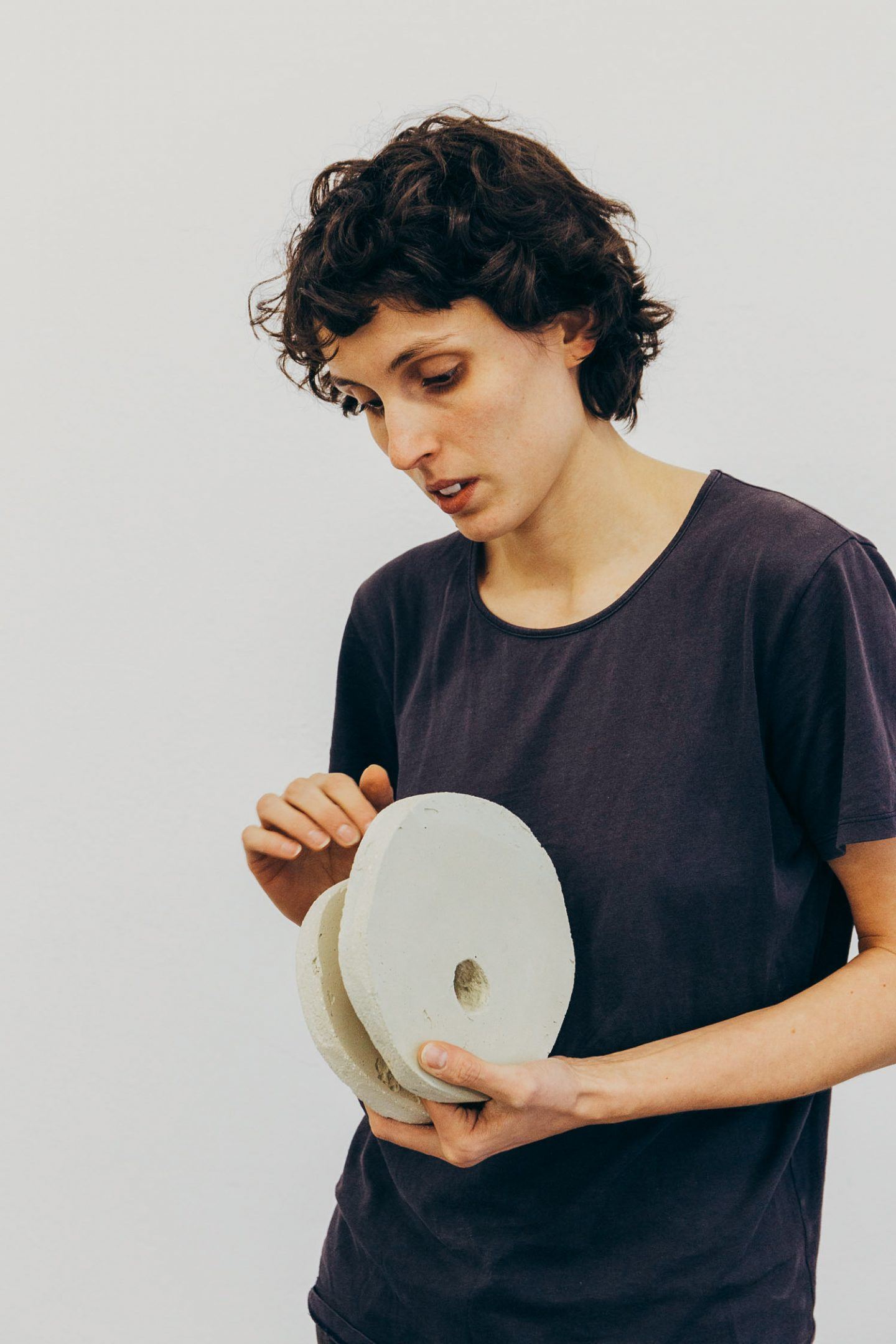
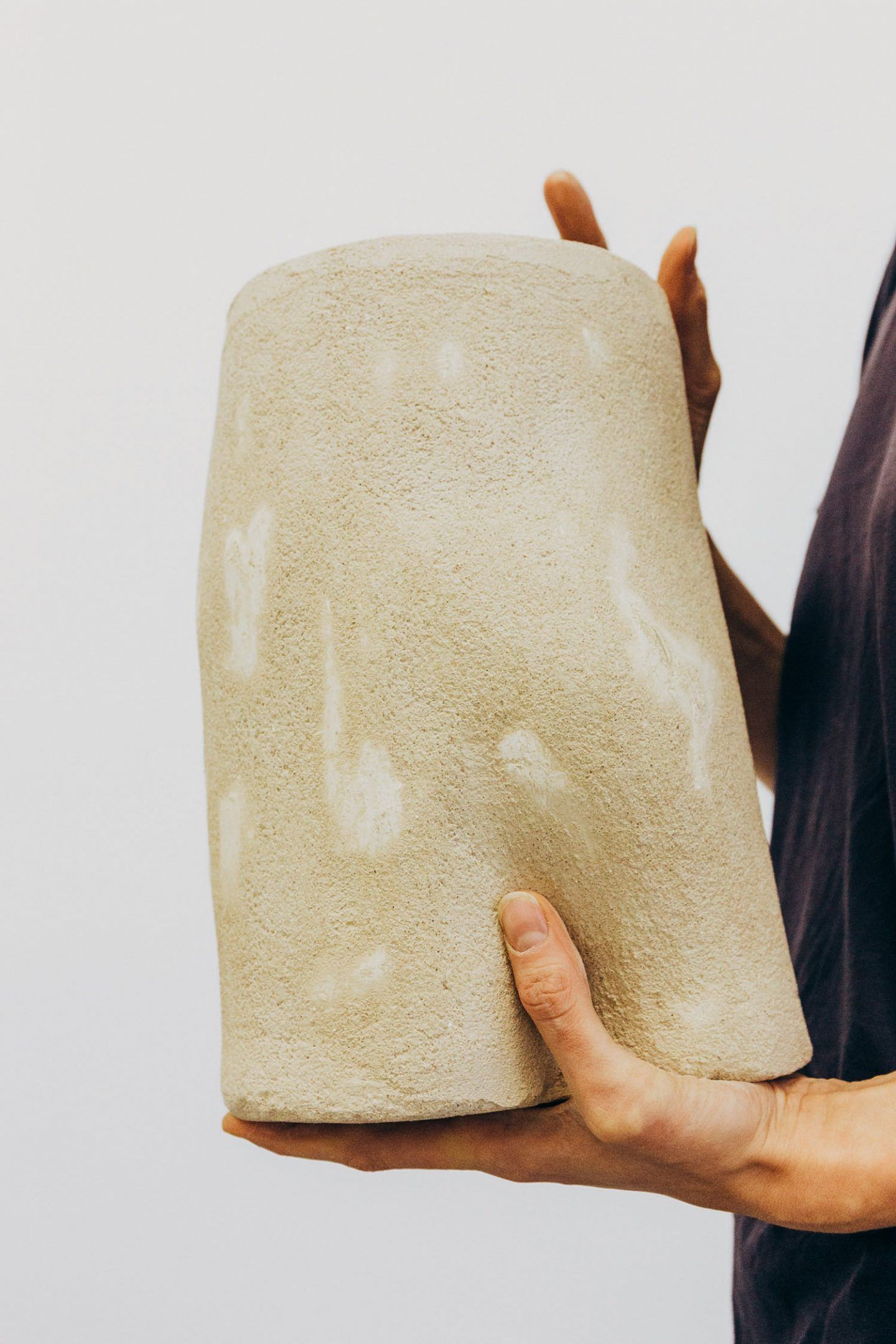
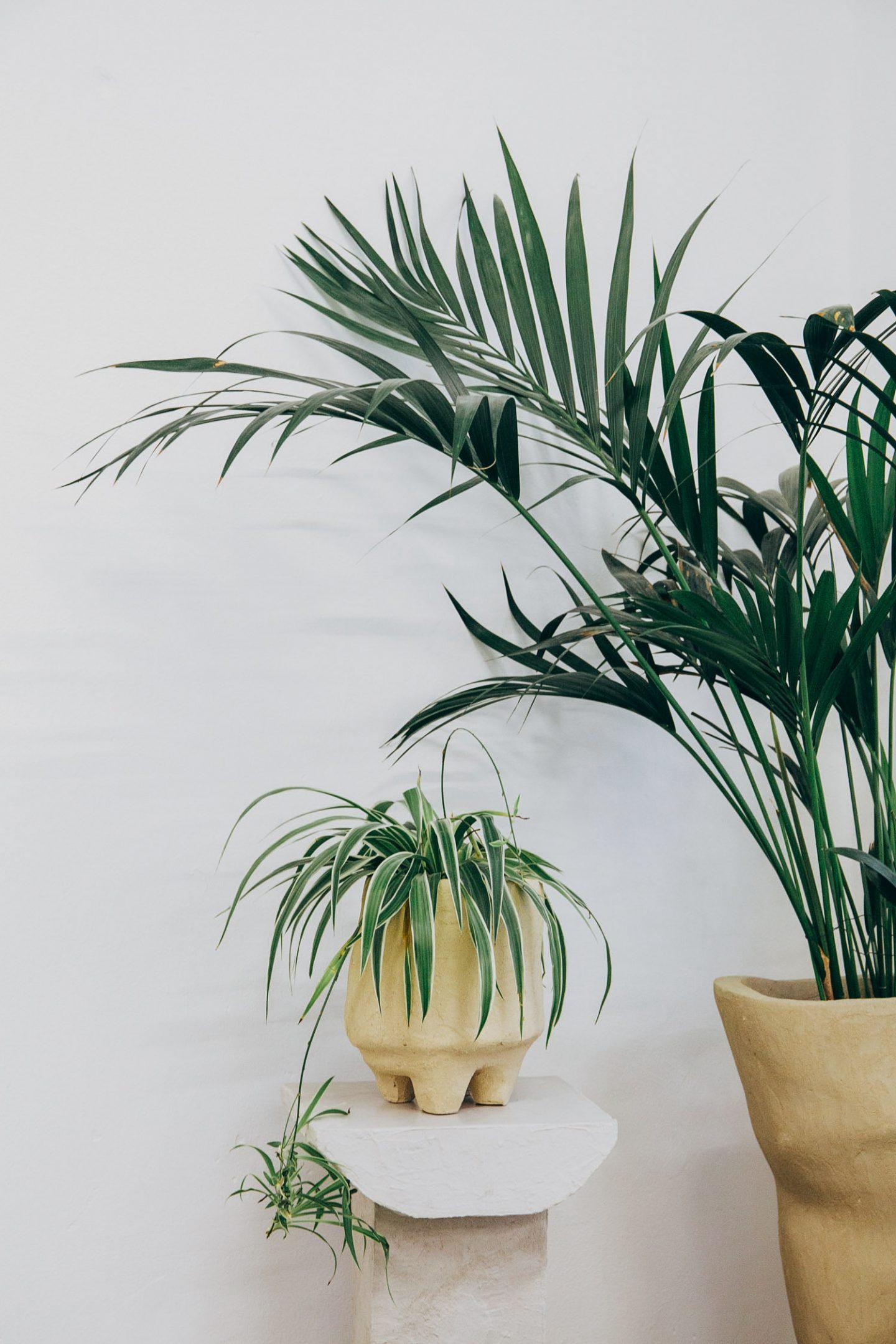
Her pieces certainly aren’t what one would typically associate with hemp; while organic in form, they are also delicate and refined. Her background in fashion design seems evident in the shapes that they take: The curves are bodily, some of her pots even have bottoms—“I just think it’s fun, and I want to stay playful with it, although I won’t do butts forever”, she says wryly. “I just like the idea of what your stuff does when you’re not looking, that it comes alive. Kind of like a creature that you live with every day.”
Having recently attended the International Hemp Symposium, she has plans to build bigger than these small household objects and to shed light on the potential of the plant for designers without an eco-aesthetic. “I want to create something that’s challenging what ecological materials are”, she explains. “I mean, hemp as a fiber can be made into any kind of fabric, but we only see this rough brown material because nobody is really developing it—not because it’s not possible. So when people think it can only be like this, I’m like, no, it’s just that no one has done it yet. You just have to find a way to make it work.”
The devastation that extreme weather is wreaking globally makes climate change impossible to ignore; at every level of production and consumption, things must change. The work and ethos of people like Yasmin is an important contribution to such a push. As is the investigation into new materials that, like hemp, have the potential to replace those that are destroying our world.
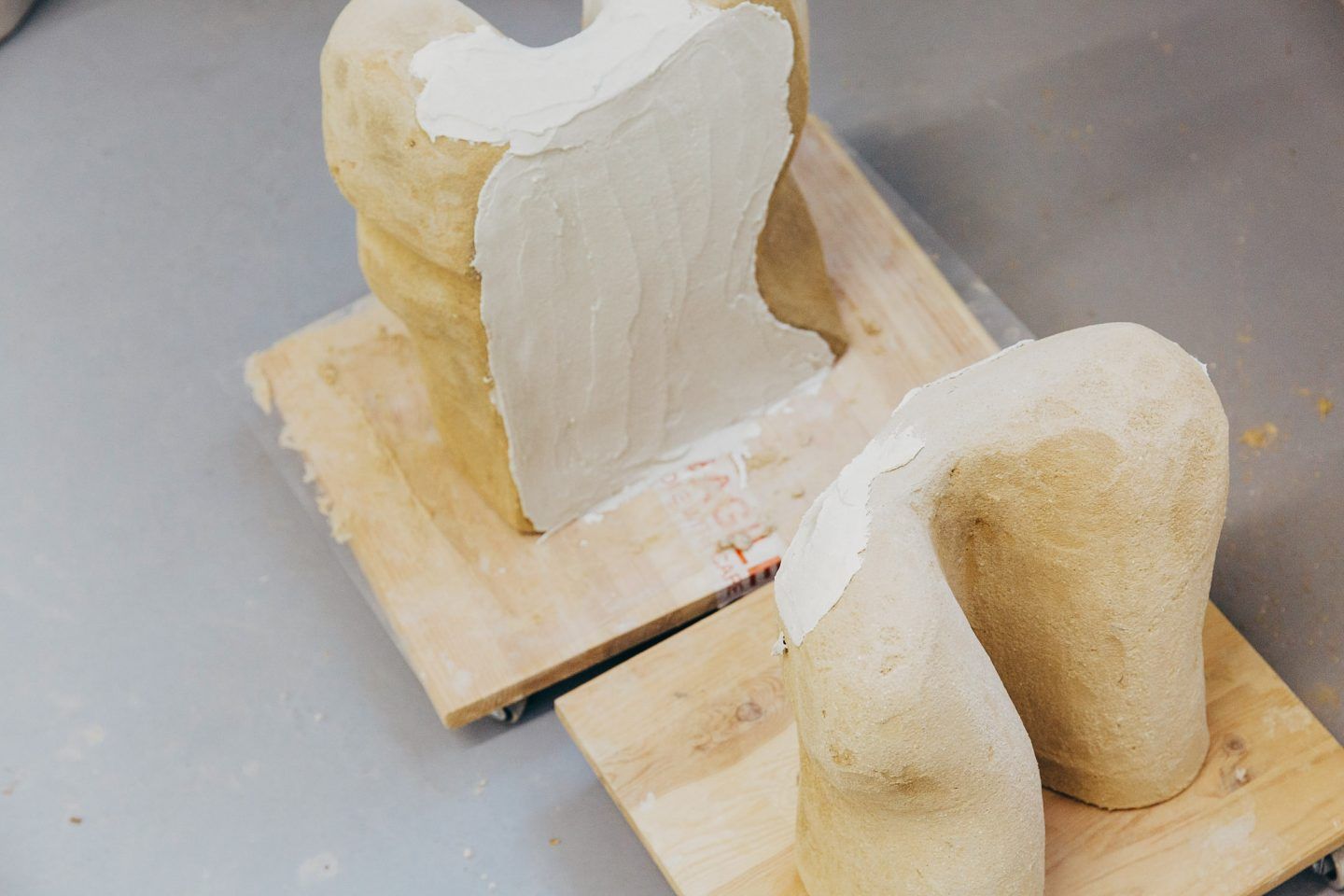
All images © Silvia Conde
